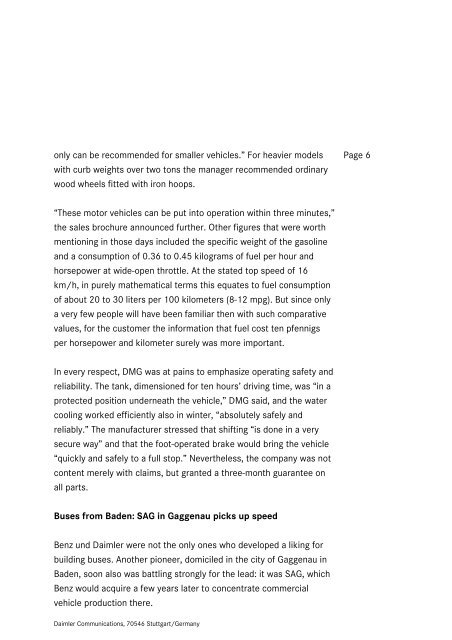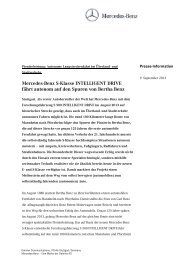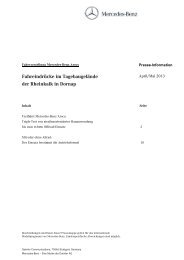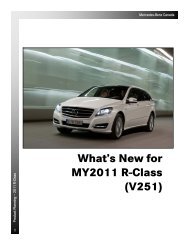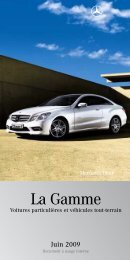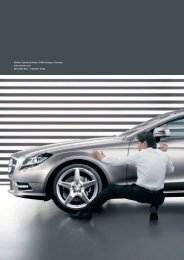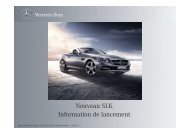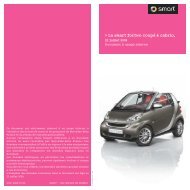Mercedes-Benz Bus History - Daimler
Mercedes-Benz Bus History - Daimler
Mercedes-Benz Bus History - Daimler
You also want an ePaper? Increase the reach of your titles
YUMPU automatically turns print PDFs into web optimized ePapers that Google loves.
only can be recommended for smaller vehicles.” For heavier models<br />
with curb weights over two tons the manager recommended ordinary<br />
wood wheels fitted with iron hoops.<br />
“These motor vehicles can be put into operation within three minutes,”<br />
the sales brochure announced further. Other figures that were worth<br />
mentioning in those days included the specific weight of the gasoline<br />
and a consumption of 0.36 to 0.45 kilograms of fuel per hour and<br />
horsepower at wide-open throttle. At the stated top speed of 16<br />
km/h, in purely mathematical terms this equates to fuel consumption<br />
of about 20 to 30 liters per 100 kilometers (8-12 mpg). But since only<br />
a very few people will have been familiar then with such comparative<br />
values, for the customer the information that fuel cost ten pfennigs<br />
per horsepower and kilometer surely was more important.<br />
In every respect, DMG was at pains to emphasize operating safety and<br />
reliability. The tank, dimensioned for ten hours’ driving time, was “in a<br />
protected position underneath the vehicle,” DMG said, and the water<br />
cooling worked efficiently also in winter, “absolutely safely and<br />
reliably.” The manufacturer stressed that shifting “is done in a very<br />
secure way” and that the foot-operated brake would bring the vehicle<br />
“quickly and safely to a full stop.” Nevertheless, the company was not<br />
content merely with claims, but granted a three-month guarantee on<br />
all parts.<br />
<strong>Bus</strong>es from Baden: SAG in Gaggenau picks up speed<br />
<strong>Benz</strong> und <strong>Daimler</strong> were not the only ones who developed a liking for<br />
building buses. Another pioneer, domiciled in the city of Gaggenau in<br />
Baden, soon also was battling strongly for the lead: it was SAG, which<br />
<strong>Benz</strong> would acquire a few years later to concentrate commercial<br />
vehicle production there.<br />
<strong>Daimler</strong> Communications, 70546 Stuttgart/Germany<br />
Page 6


